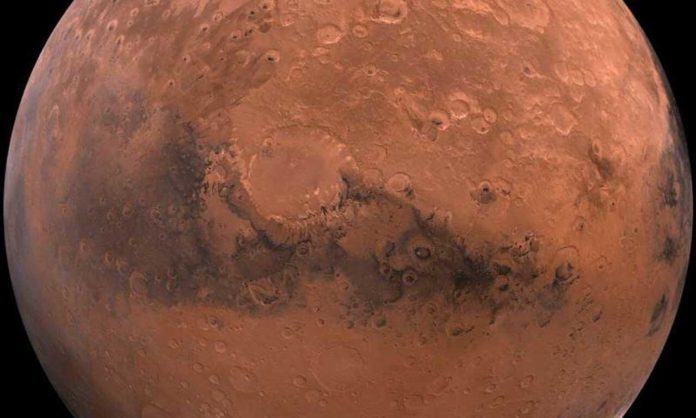Enormous cloud-like plumes reaching 260km above the surface of Mars have left scientists baffled. This is way beyond Mars’s typical weather, entering into the exosphere where the atmosphere merges with interplanetary space.
These mystery clouds came as a surprise, especially when considering they were first spotted by a string of amateur astronomers in 2012. None of the customary clarifications for such clouds makes sense as neither water or carbon dioxide ice nor dust storms nor auroral light outflows, for the most part, hit such heights.
So, How did the Red Planet get all of its clouds?
CU Boulder specialists may have solved the mystery: include meteors. Scientists studied those wispy accumulations and proposed that they have their existence to the phenomenon called meteoric smoke- icy dust created by space debris slamming into the planet’s atmosphere.
The discoveries are an update that planets and their weather patterns aren’t disengaged from the solar system around them.
Victoria Hartwick, a graduate student in the Department of Atmospheric and Ocean Sciences (ATOC) said, “We’re used to thinking of Earth, Mars and other bodies as these self-contained planets that determine their climates. But climate isn’t independent of the surrounding solar system.”
“Clouds don’t just form on their own. They need something that they can condense onto.”
“On Earth, for example, low-lying clouds begin life as tiny grains of sea salt or dust blown high into the air. Water molecules clump around these particles, becoming bigger and bigger until they form the large puffs that you can see from the ground.”
“But, as far as scientists can tell, those sorts of cloud seeds don’t exist in Mars’ middle atmosphere. About two to three tons of space debris crash into Mars every day on average. And as those meteors rip apart in the planet’s atmosphere, they inject a huge volume of dust into the air.”
To identify if such smoke is responsible for martian clouds, scientists created a computer simulation that attempts to mimic the flows and turbulence of the planet’s atmosphere. When they included meteors in their calculations, clouds appeared.
Hartwick said, “Our model couldn’t form clouds at these altitudes before. But now, they’re all there, and they seem to be in all the right places.”
The idea may not seem outstanding, but the study suggests similar interplanetary schmutz.
Hartwick said, “you shouldn’t expect to see gigantic thunderheads forming above the surface of Mars anytime soon. The clouds we studied were much more like bits of cotton candy than the clouds Earthlings are used to.”
“But just because they’re thin and you can’t see them it doesn’t mean they can’t affect the dynamics of the climate.”
The simulation showed that middle environment clouds could largely affect the Martian atmosphere. Contingent upon where the scientists looked, those clouds could make temperatures at high heights swing up or somewhere near as much as 18 degrees Fahrenheit (10 degrees Celsius).
And that climactic impact is what gets Brian Toon, a professor in ATOC, excited. He said that the team’s findings on modern-day Martian clouds may also help to reveal the planet’s past evolution and how it once managed to support liquid water at its surface.
“More and more climate models are finding that the ancient climate of Mars when rivers were flowing across its surface, and life might have originated, was warmed by high altitude clouds,” Toon said. “It is likely that this discovery will become a major part of that idea for warming Mars.”
The study is published in the journal Nature Geoscience.
